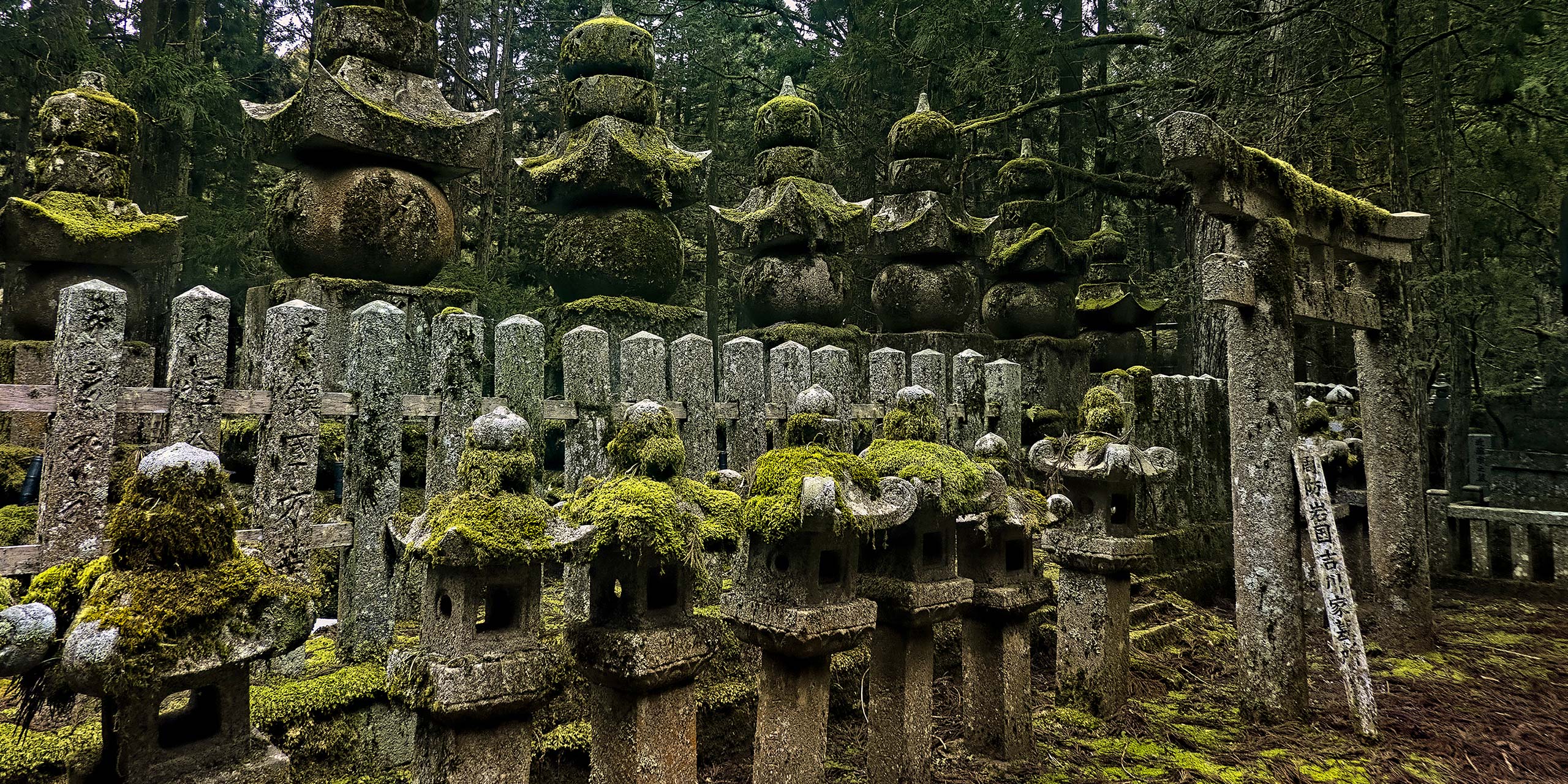
Wakayama’s Kii Peninsula only lies a few hours by train from Osaka and Nara. But it feels light-years away from the busy and touristy Japanese cities. You’ll find the traditional Japan here: think tiny, picturesque hamlets with tiled-roof houses, riverside hot springs, mystical deep cedar forests, and beautiful secluded Shinto and Buddhist temples and shrines.
The area is so captivating that UNESCO awarded a World Heritage designation to the entire region for its Sacred Sites and Pilgrimage Routes. And it’s here that one finds the Kumano Kodo, a series of ancient long-distance walking routes that connect the shrines and go through a magical part of Japan that few visitors get to experience.
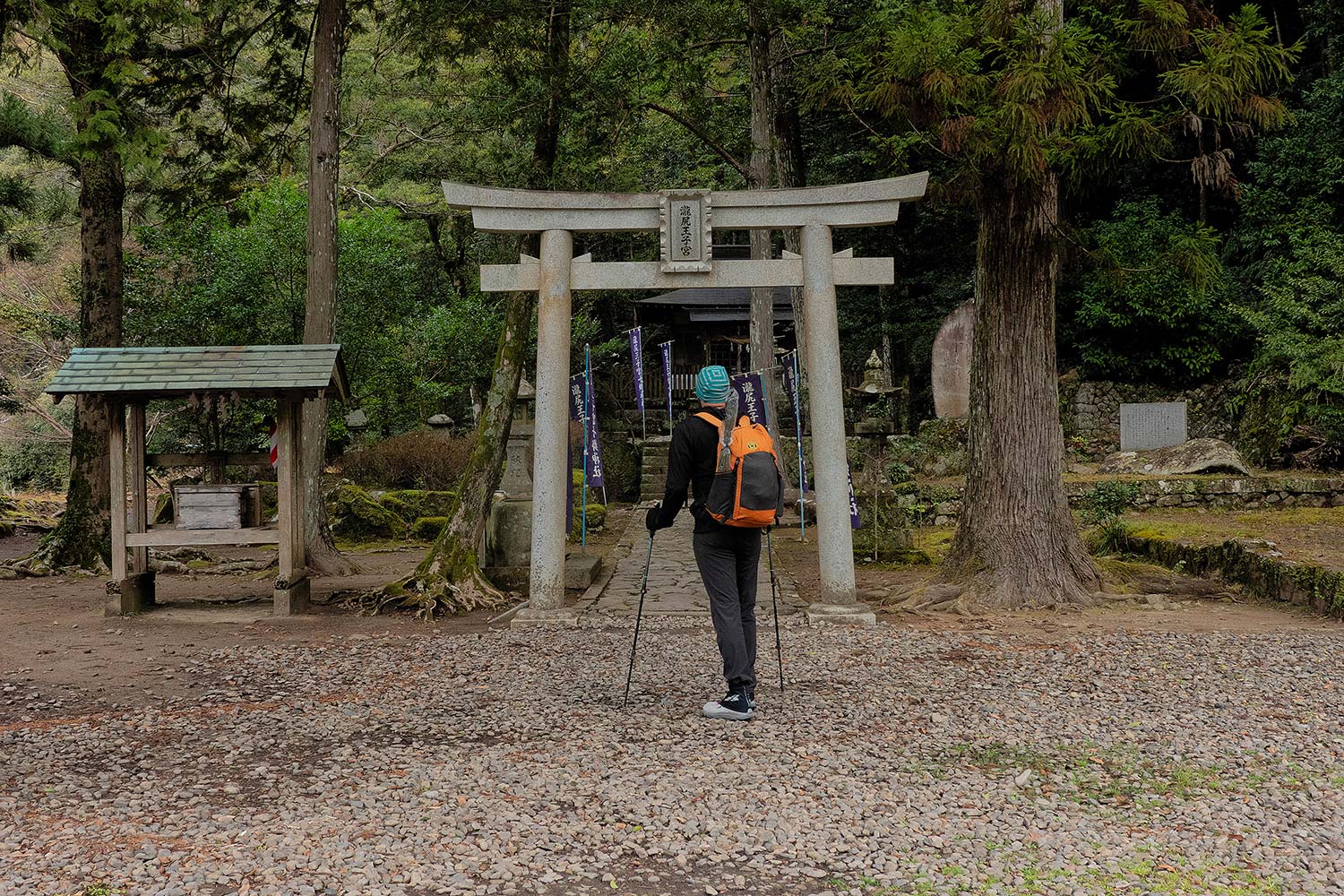
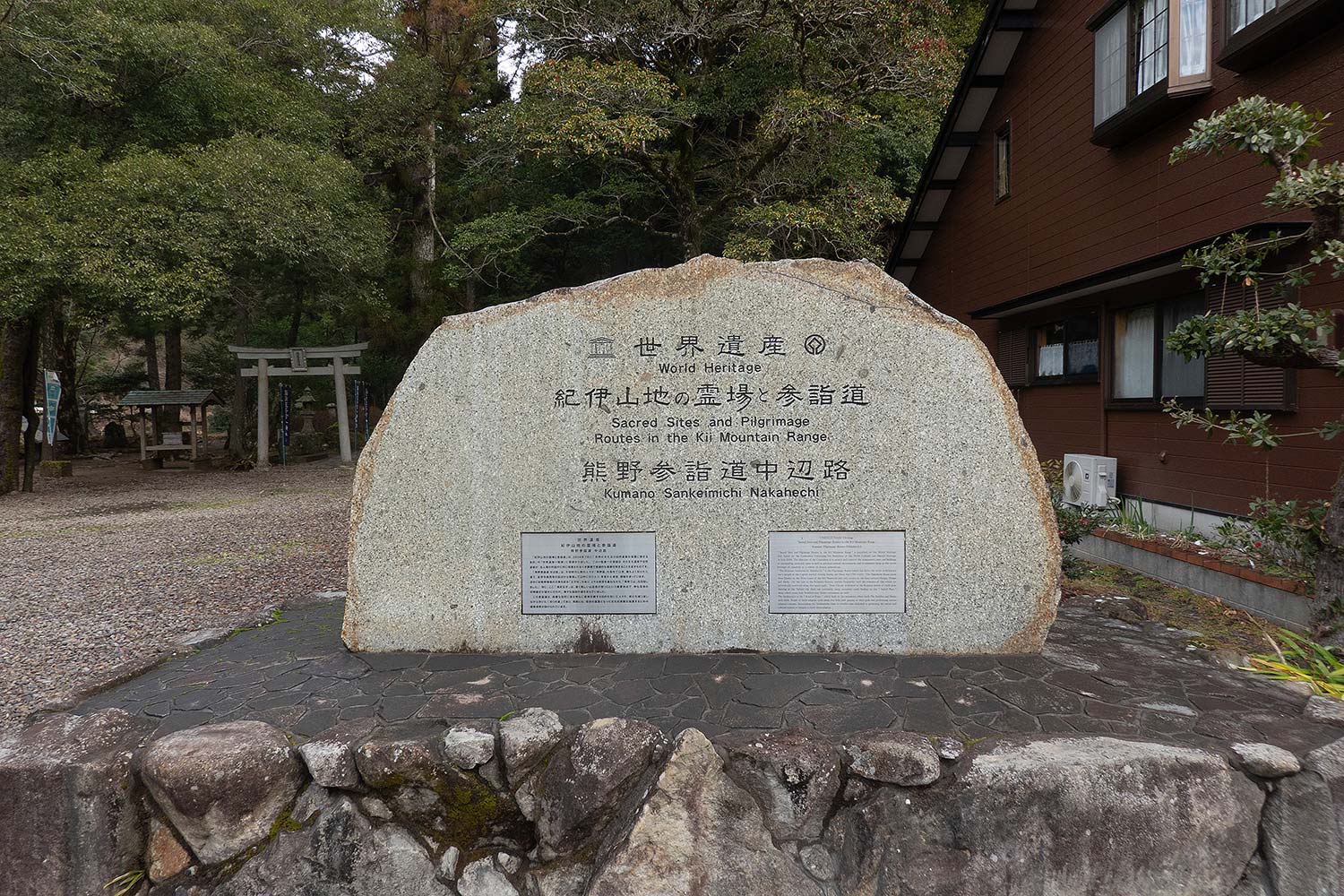
My wife and I set out to walk the Nakahechi, a 70-kilometer path between the three grand shrines of the Kumano, and then follow the steep trails of the Kohechi and Choishimichi Kumano routes to Koyasan, a vast mountain temple complex home to Japan’s largest cemetery as well as the mausoleum of Kobo Daishi, a Heian-era monk and pilgrim who founded Shingon Buddhism and the entire Koya temple community.
Kobo Daishi, known as Kūkai while he was alive, walked all these trails, as have pilgrims that have ranged from peasants to emperors, all seeking spiritual salvation. Today, the sojurn into the Kii Mountains remains a sacred trail, with the Kumano Kodo now being linked as a sister pilgrimage to Spain’s famed Camino de Santiago, with certificates of dual pilgrimage awarded to those who complete both routes.
We started our journey in Takajiri, where the Takajirioji Togo Shinto shrine and its traditional torii gate mark the entrance to the Kumano Kodo.
There are countless shrines and holy spots along the route which have small altars containing stamps, where pilgrims and trekkers can ink their “passports” as proof of their journey, as well as pause to reflect on the travails the early pilgrims undertook through this remote region.
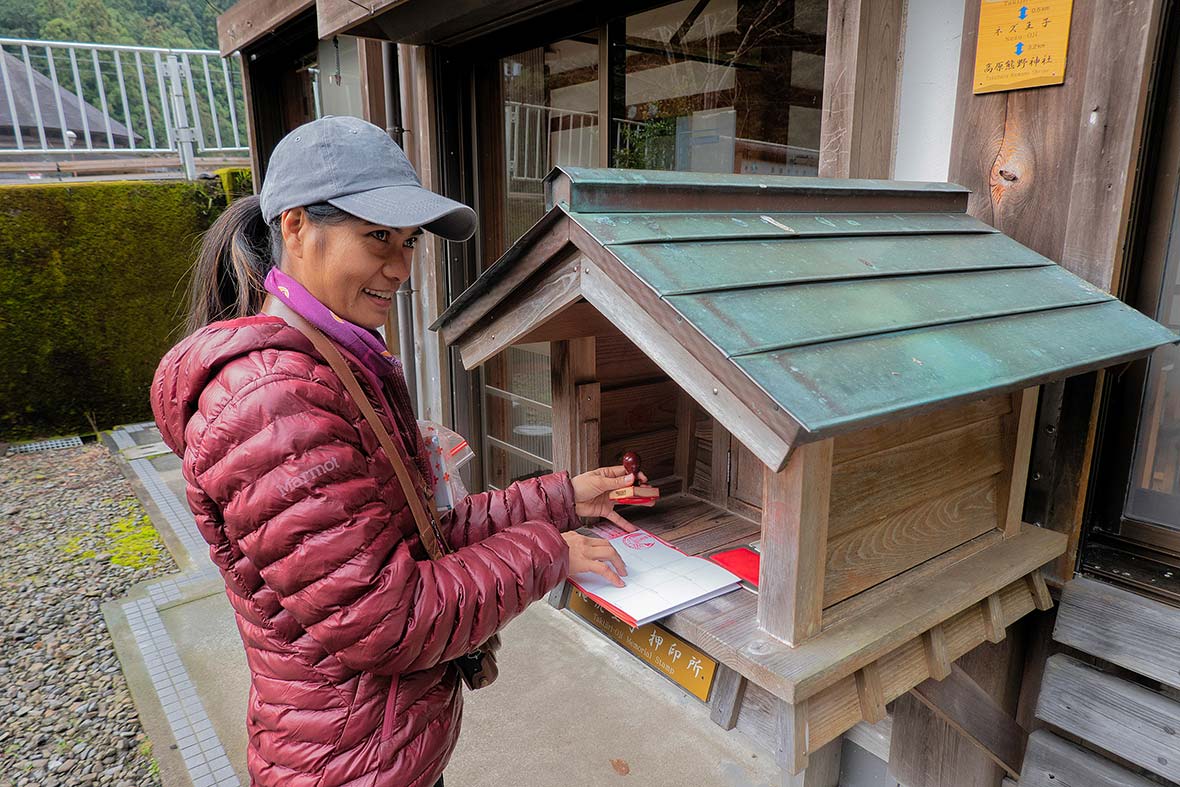
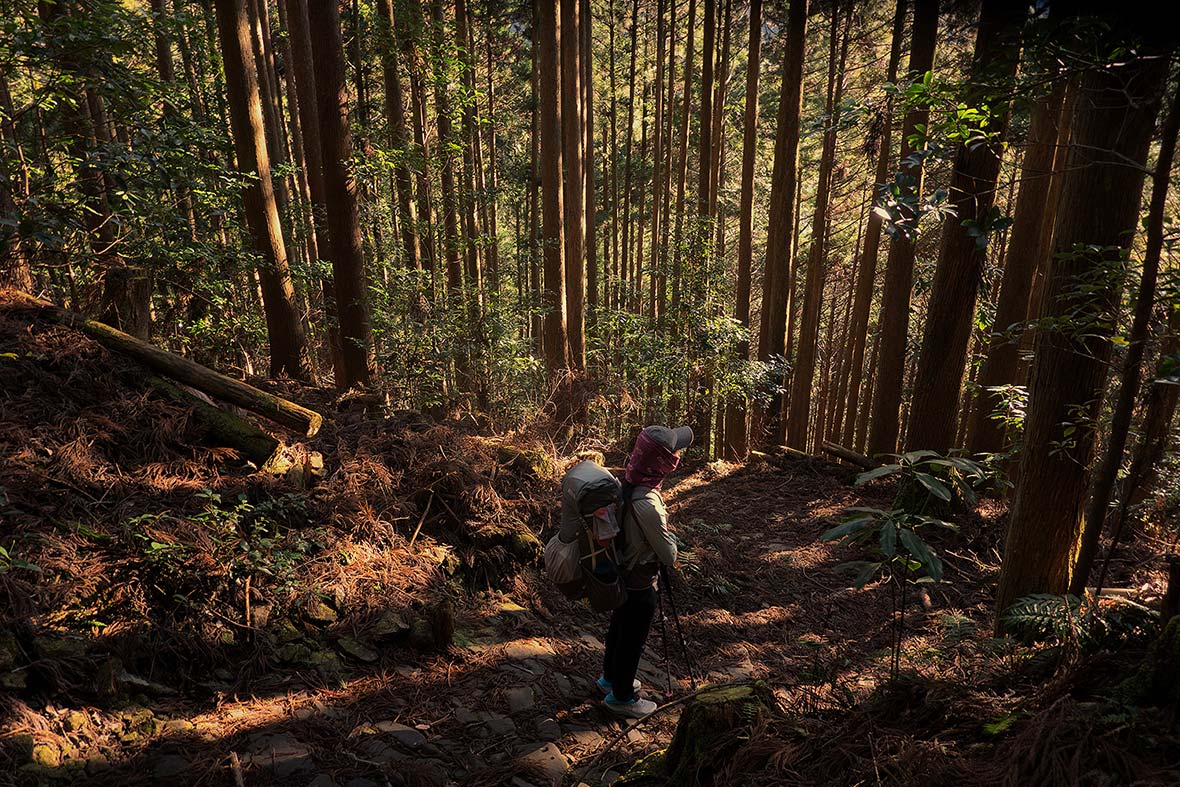
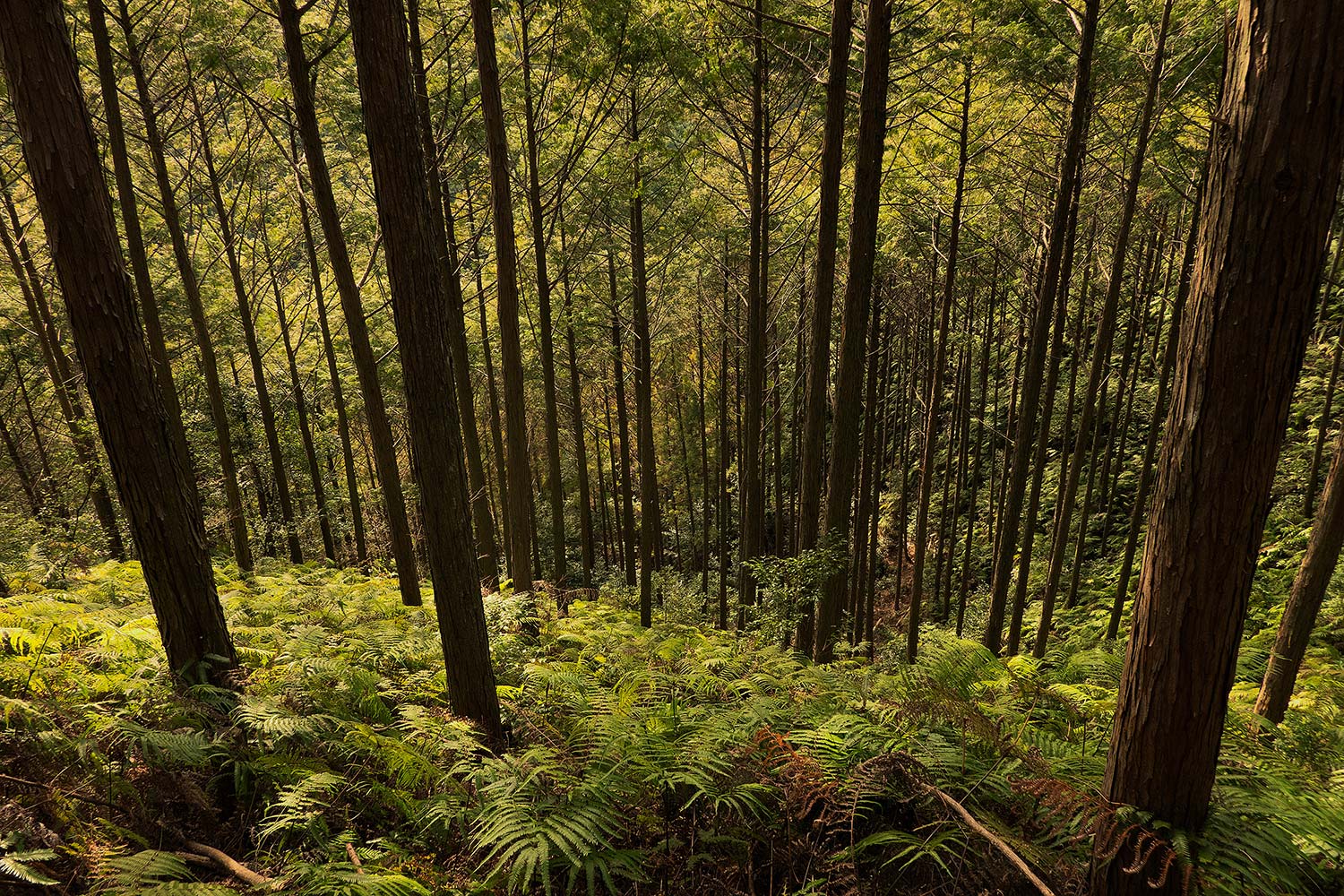
First walked in the 10th century, the route here provided early Shugendo practitioners with ample opportunities for communing with wild nature. While UNESCO status and tourism have brought plenty of trail maintenance and amenities, the Nakahechi still traipses through deep and dense cedar forests, and through a wilderness often not believed possible in modern Japan, complete with bears and no sign of human habitation for miles.
Within minutes of wandering through the torii gate, we ascended steeply over gnarled roots into a vast green canopy, heading up the spine of Tsurugi Mountain.
After several hours of climbing, we crested the ridge and emerged out of the forest into Takahara, a small village overlooking the Hatenashi Mountains. While much of rural Japan has started to resemble a ghost town, along the Kumano Kodo there is still plenty of promise, with enough trekkers to keep inns, homestays, and a handful of shops and eateries in business, with young folks taking over family homes and keeping traditions and rural hospitality alive.
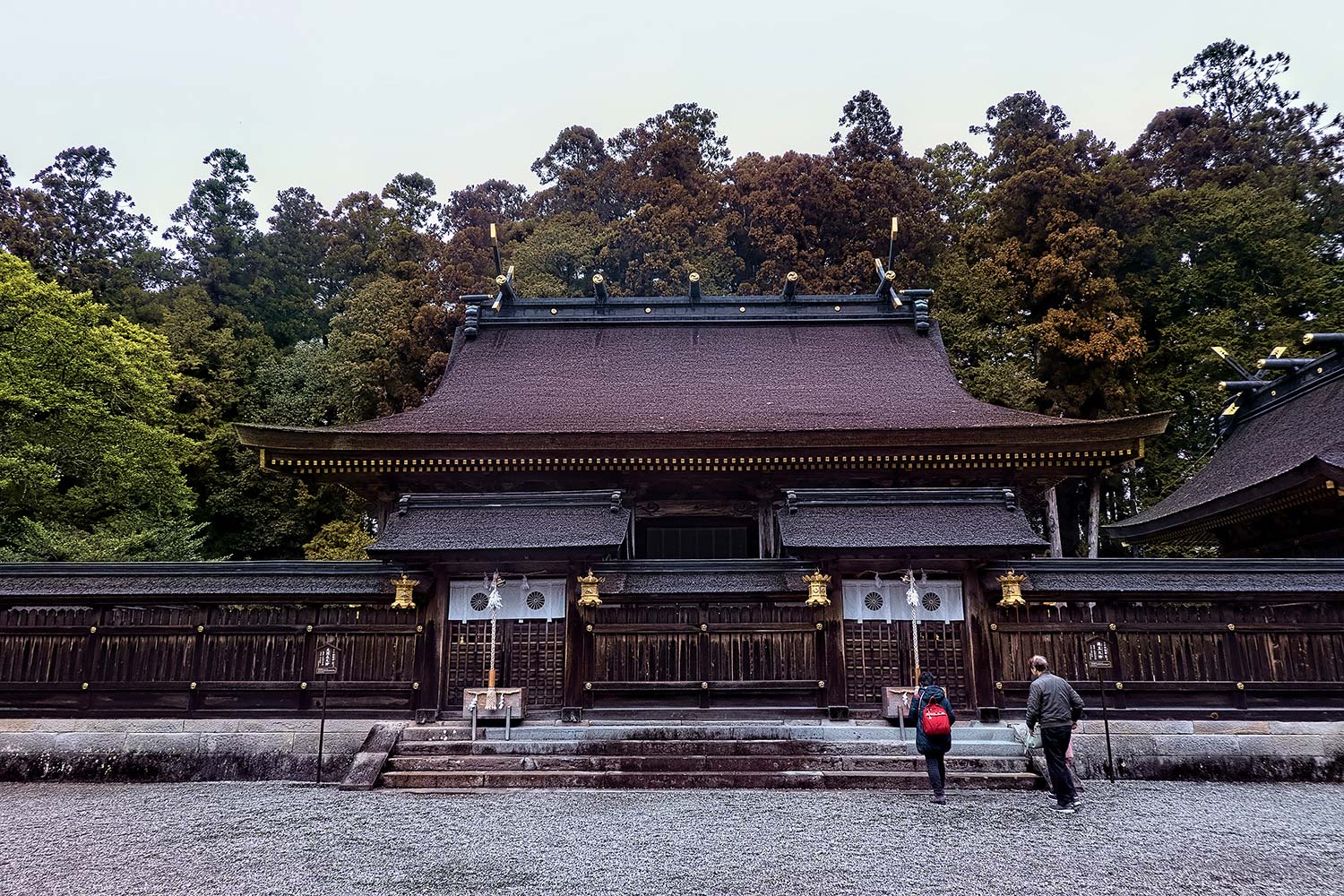
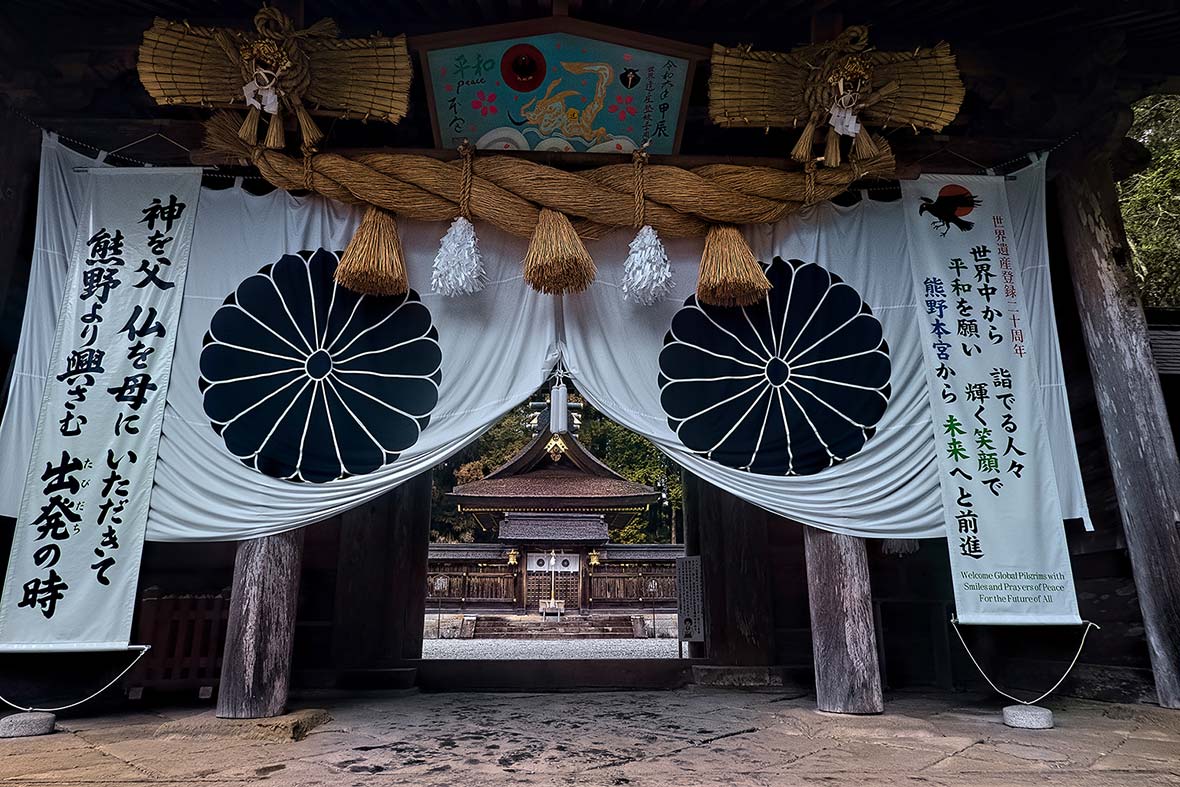
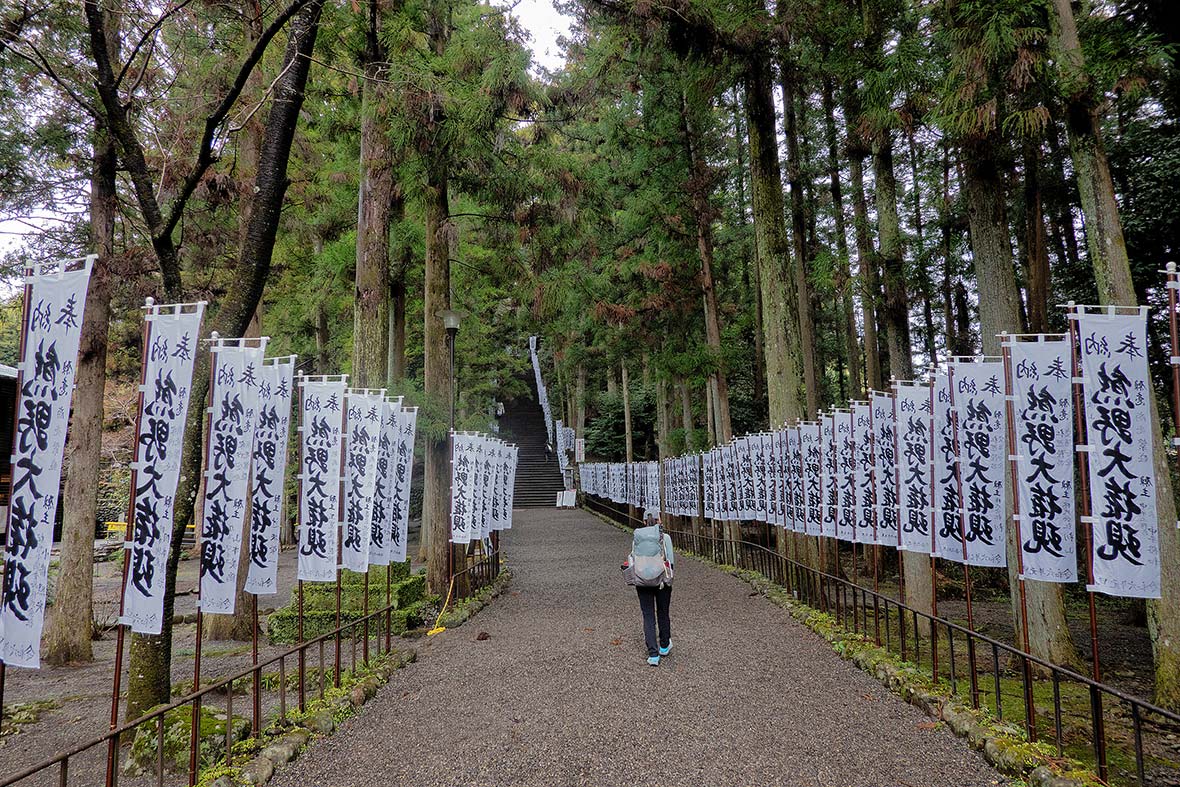
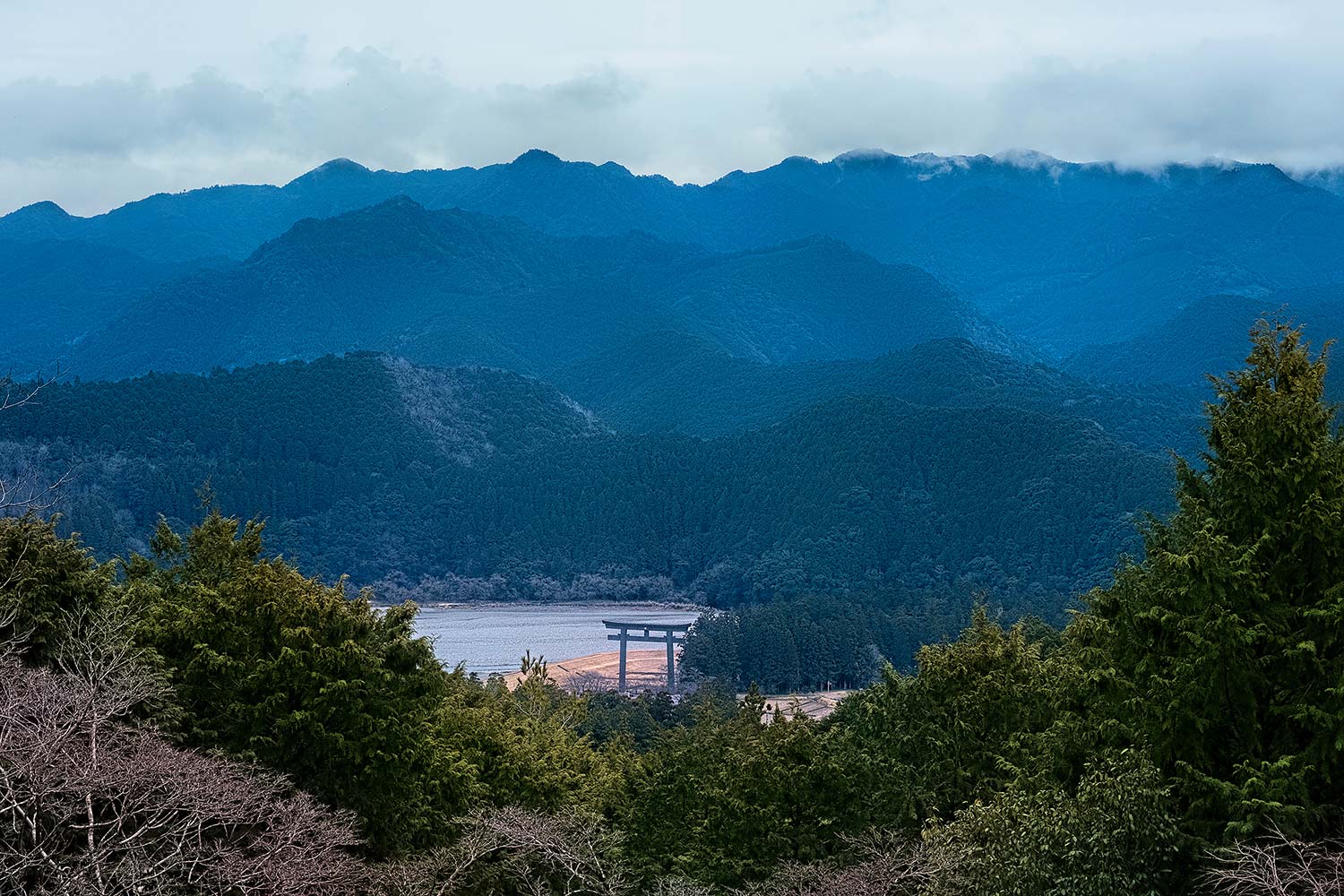
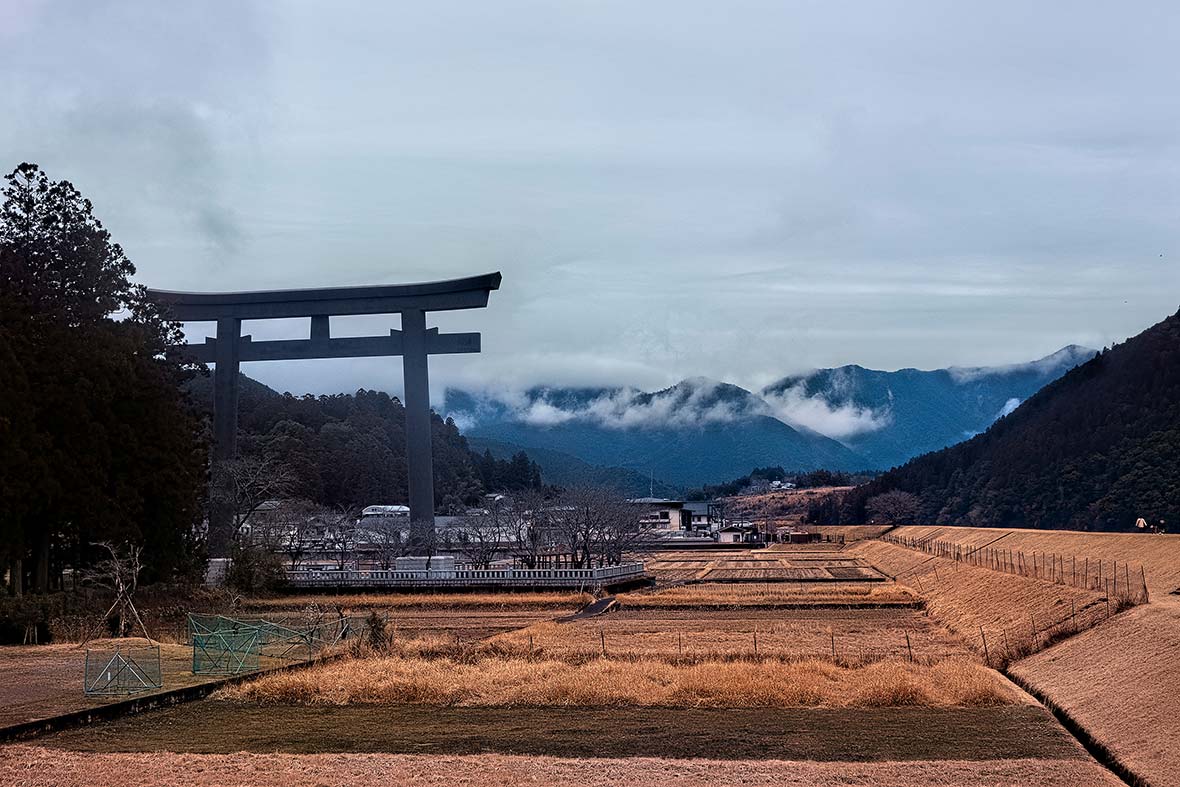
We covered 15 hard kilometers on our first day out, eventually descending to the fertile village of Chikatsuyu, famed for its ume. Translated into English as plums, ume are closer to apricots, and Wakayama is renowned for its fantastic aged umeshu wine. At our family inn in Chikatsuyu, we were welcomed with a cup of homemade wine, set up with warm comfortable futons, and a hot bath readied for us to soak in. In contrast to most of the trekking we normally do, which entails setting up camp and roughing it, or staying in crowded alpine huts full of snoring hikers, walking on the Kumano was sheer bliss.
The following morning, we headed back into the captivating forest. The steep trail makes towards the Hongu Taisha Grand Shrine, where many Kumano pilgrim routes meet. Set in a remote valley, visitors climb steep stairs to pray for luck at the austere shrine pavilions, which feature exquisite roofs made of cypress bark and utilize almost no nails in their construction. Further down we found the Oyunohara torii gate, which at 34 meters is the tallest gate in Japan and the world, towering over the rice fields and nearby Kumano River.
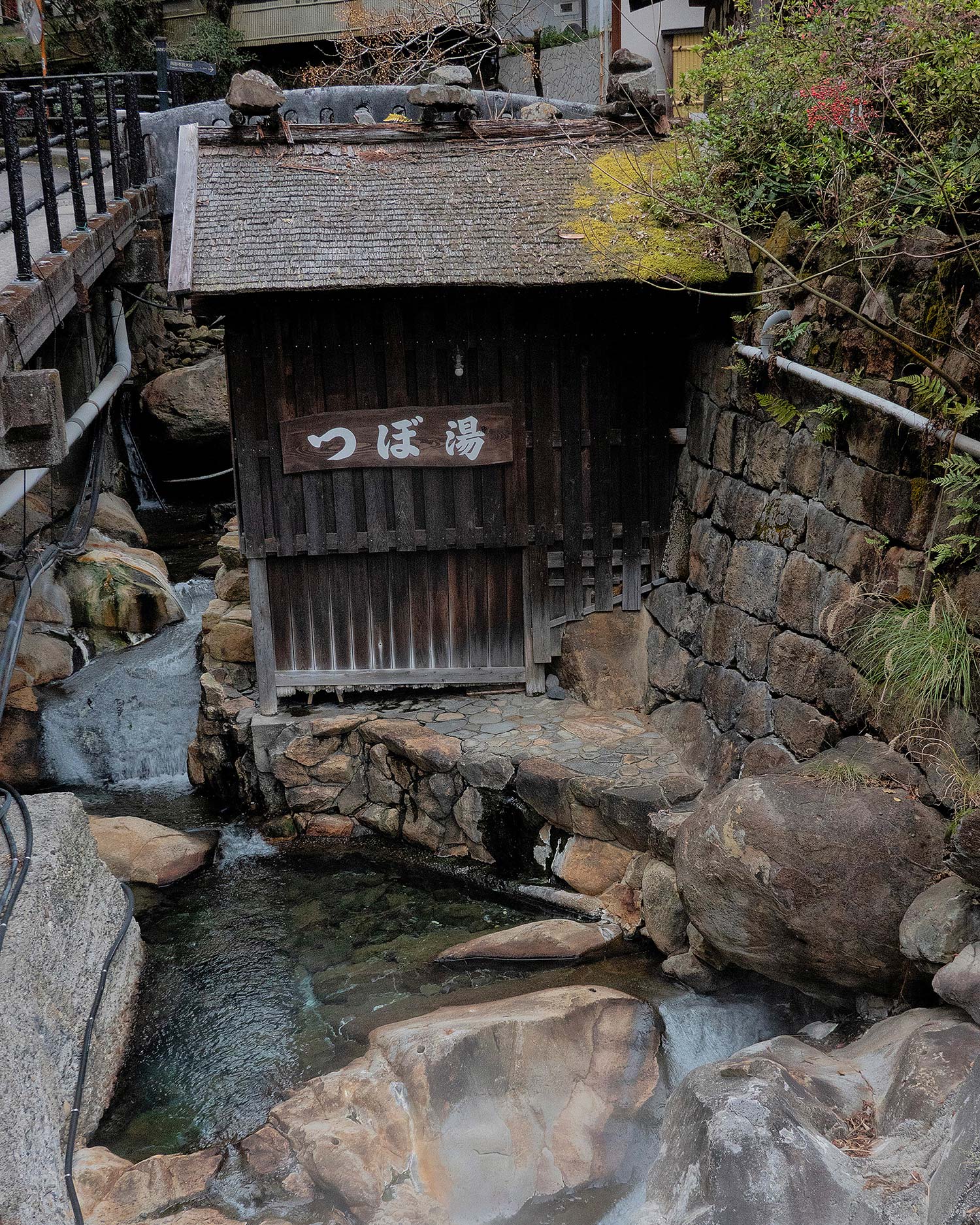
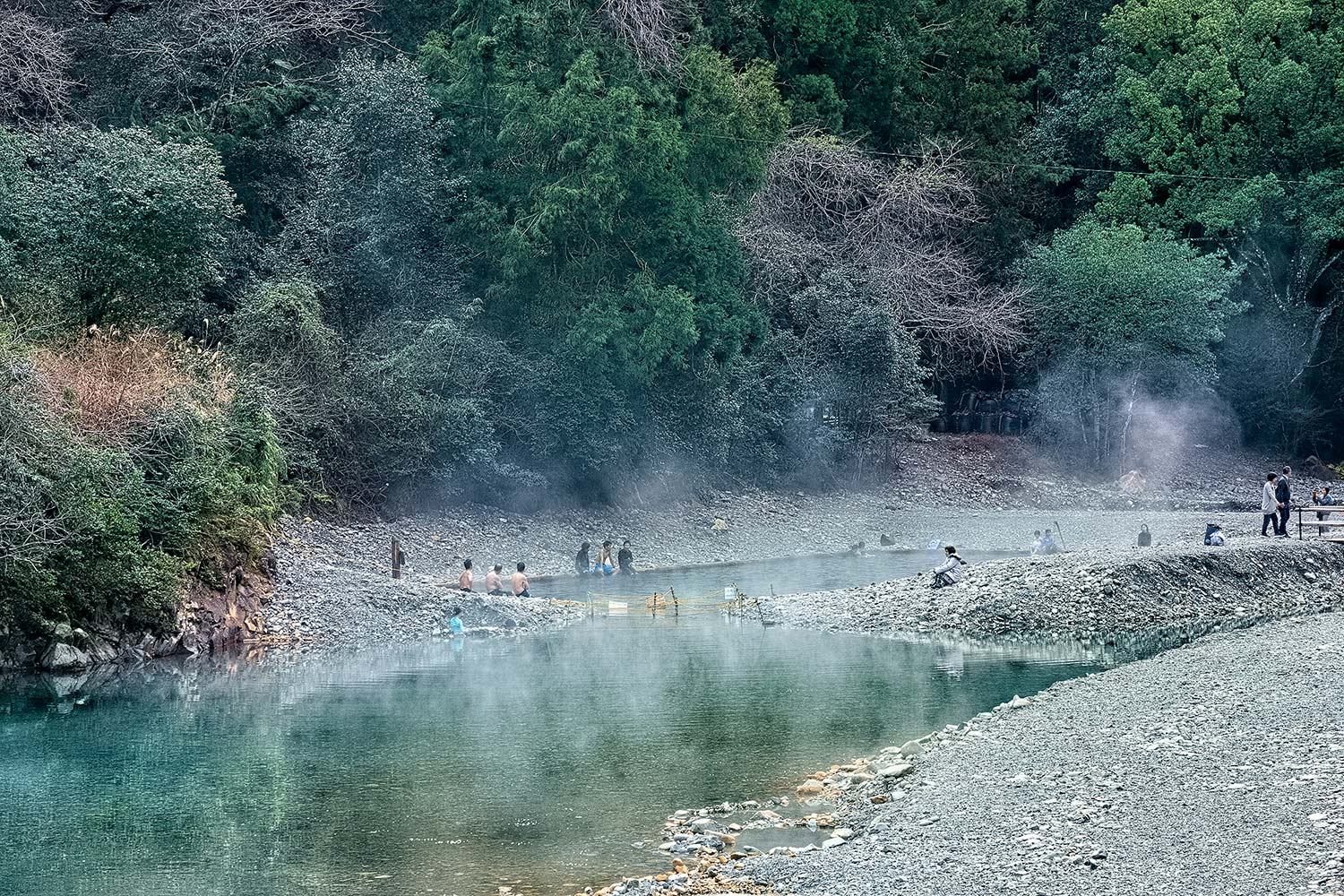
While the hardest stretch of trail was still in front of us, we celebrated the halfway mark with some fantastic soaking, as this part of Wakayama features some top-notch hot springs. A short trail climbs over a ridge from Hongu Taisha to Yunomine Onsen, a tiny hot spring hamlet where pilgrims have been doing purification rites for 1000 years. The waters here are said to change color seven times a day, and the village features a collection of traditional ryokan inns as well as the world’s only UNESCO-awarded hot spring, a tiny sulfur rock bath called Tsuboyu that only holds two people and is the oldest hot spring in Japan. A further 30-minute walk from here brought us to yet an even more enjoyable spring, Kawayu Onsen, where the pristine Oto River boasts a section of boiling pools that turn the entire river hot, the perfect spot to soothe our sore quads and feet while gazing out at the scenic natural surroundings.
Leaving the hot baths behind, the Kumano Kodo continued into its steepest climb, a 2500-foot slog through the forest that emerged at one of the trail’s highest points, a lookout called Hyakken Gura, with a viewpoint known as the “3600 peaks of the Kumano Kodo,” due to the vista of the endless mountains across the Kii Peninsula seen from this vantage point. It had rained the entire way up, but we got a break in the clouds as we hit the top, with fabulous views of the clouds and mist floating through the valleys below.
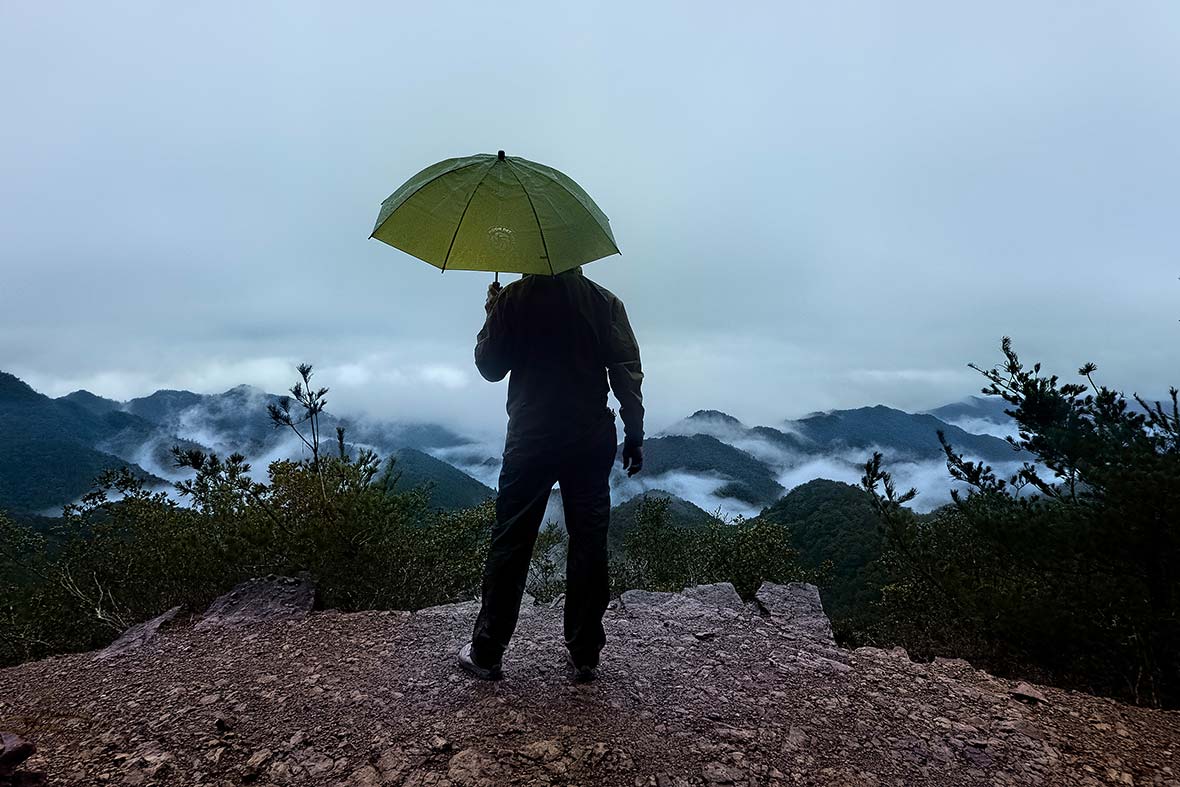
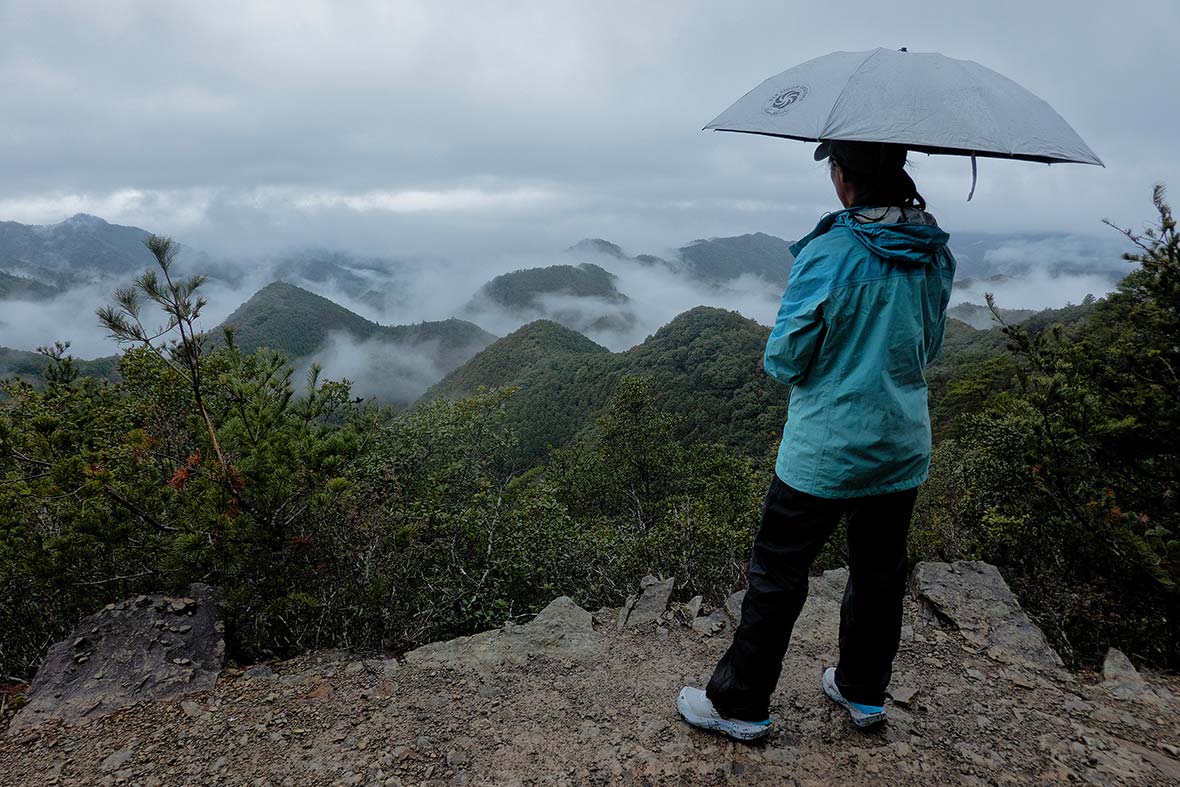
In true Kumano and pilgrimage form though, it was not all downhill from here. The route dropped back down through the forest and then began earnestly climbing a trail full of roots and moss-covered stones. This section, known as Dogiri Zaka, translates to “Body Breaking Slope,” due to the relentless grade that winds seemingly forever up into the clouds, eventually reaching the almost 900-meter Echizen Pass, followed by a further pass, the Ishikura Toge, from where we could see the Pacific Ocean shimmering below.
Famed Japanese poet Fujiwara Teika trekked here in 1201, and his diary entry from this bit of trail read, “This route is very rough and difficult; it is impossible to describe precisely how tough it is.” I chuckled to note that nothing had changed in over 800 years.
We descended towards the coast, eventually reaching Nachisan, home to yet another grand shrine, the Kumano Nachi Taisha, its brilliant flaming orange paint contrasting with the surrounding green forest. A short stroll from the shrine was Nachi Falls, the highest waterfall in Japan, best viewed from a nearby pagoda. Our book of stamps was getting full, and we were close to the end, but no Kumano visit can truly end until one has been to Koyasan.
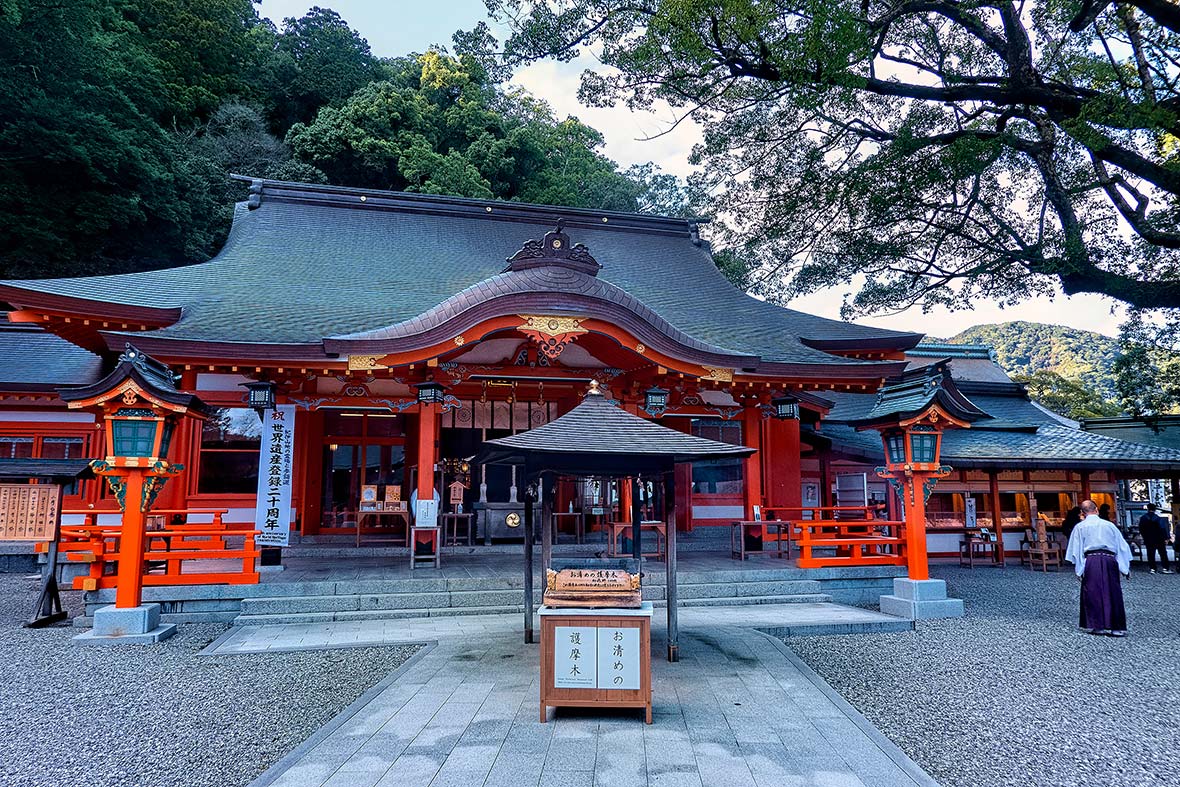
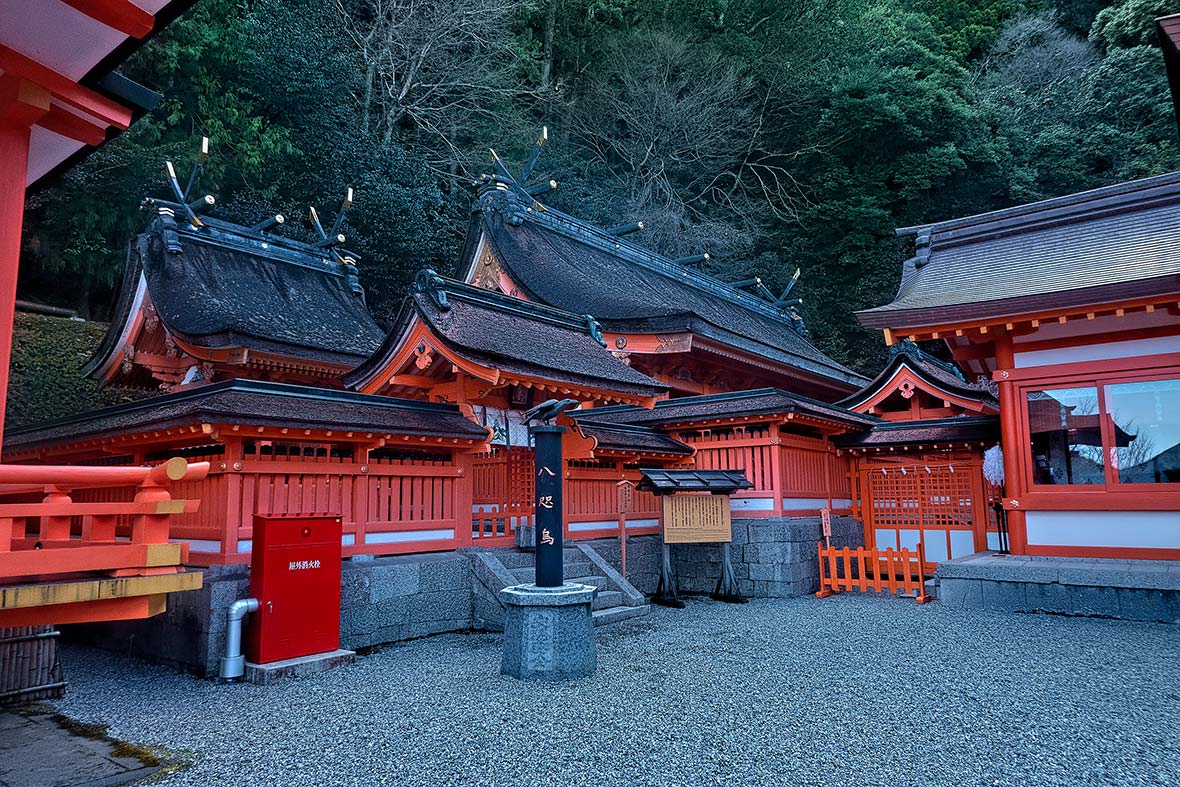
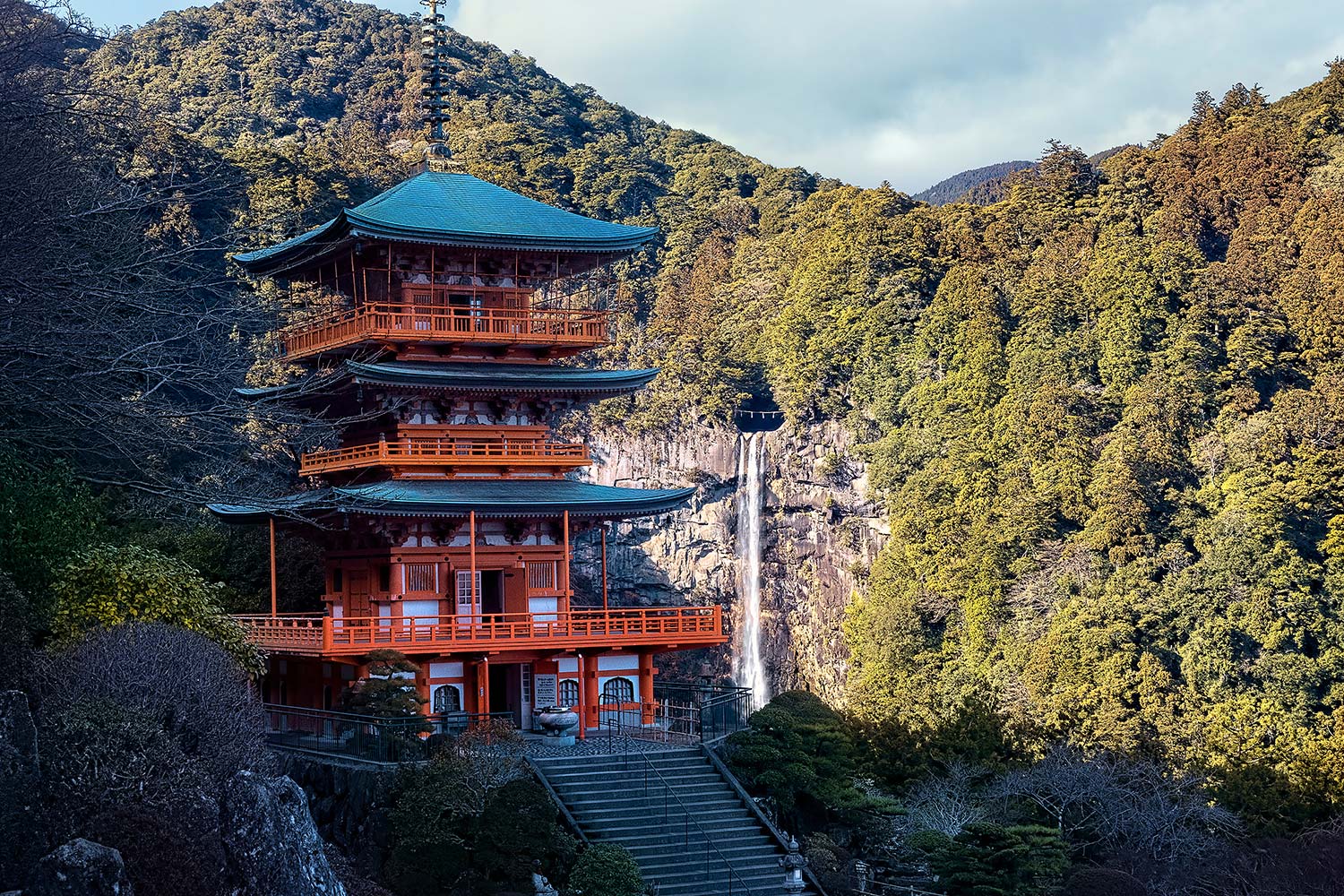
It is impressive, whether you walk to Koyasan or take the electric cable car up to the mountain plateau it sits on. Walking lets you appreciate the scale and immensity of the spectacular wooded mountaintop site. We followed the Choishimichi, a path so named for its stone pillars called choishi, an ancient unit of measurement equivalent to 109 meters. 180 old pillars mark the trail up to Koyasan, and then another 36 leading across the top to the Okunoin Cemetery.
Founded in 816 AD by Kobo Daishi, Koyasan was and is a place to escape the busy world below. Temples today still are home to practicing monks and ascetics, and some of the temples now serve as atmospheric lodgings and retreats, with visitors invited to take part in meditation, chanting, and other temple-life staples. For us, Koyasan was the end of our walking journey, and a stroll through the Okunoin Cemetery forest paths revealed some of the most captivating scenery and mystique-filled auras we experienced during our stay.
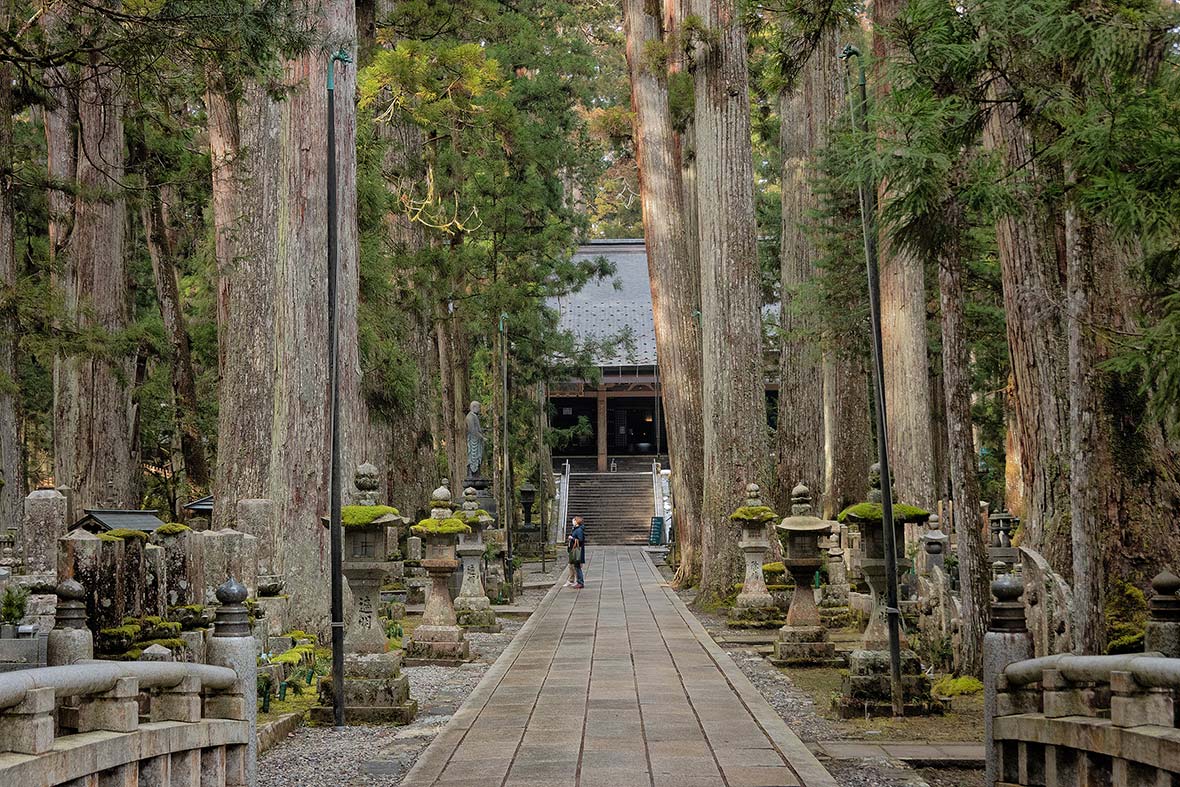
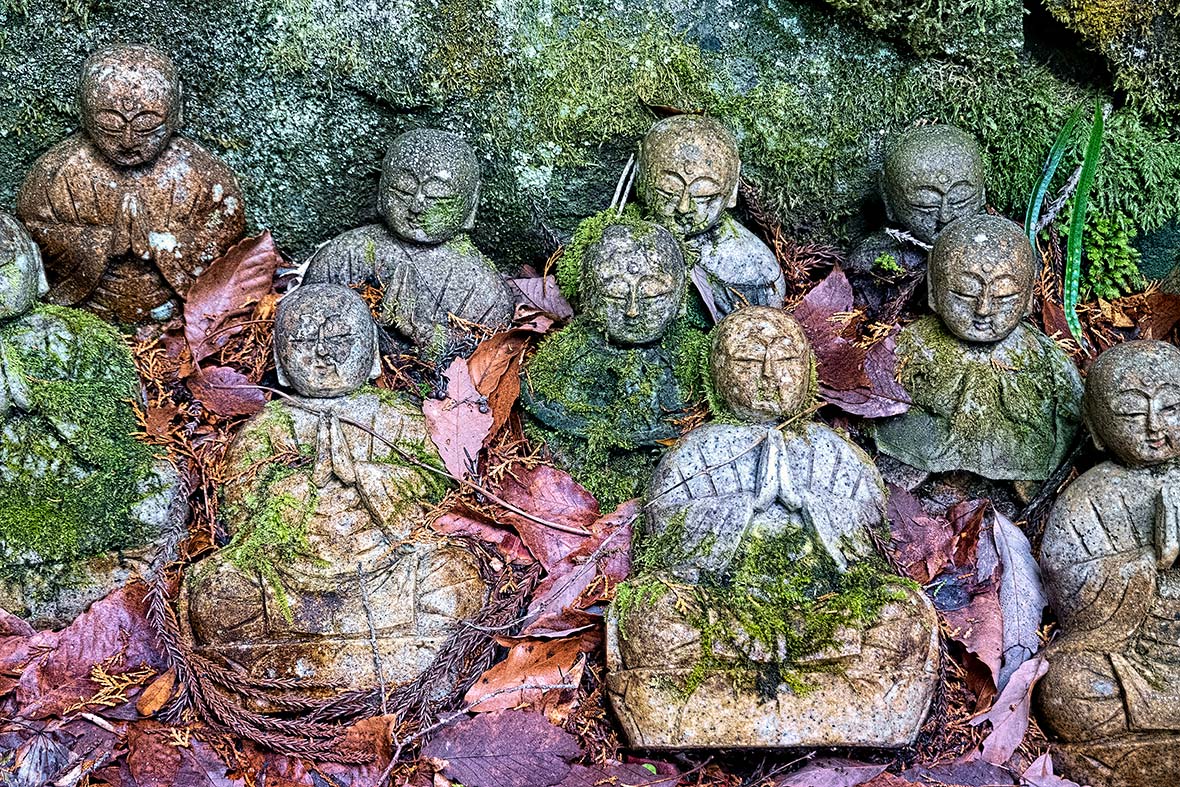
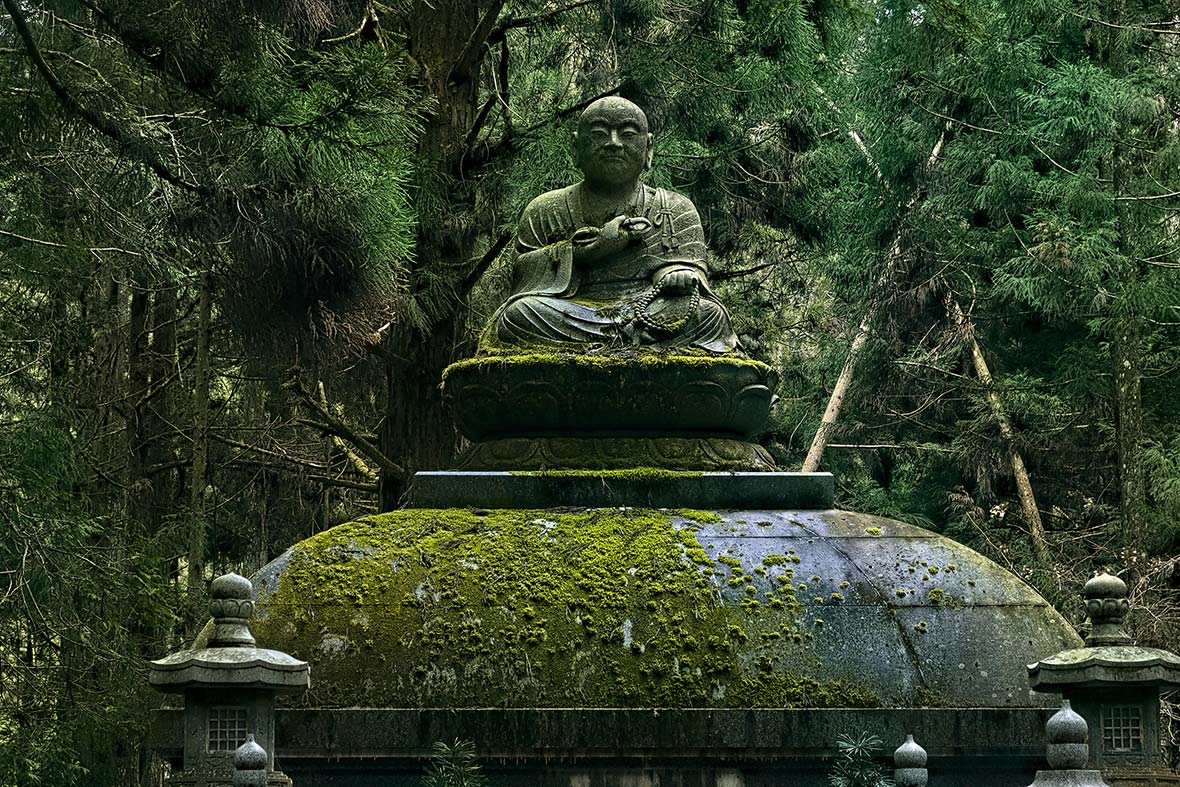
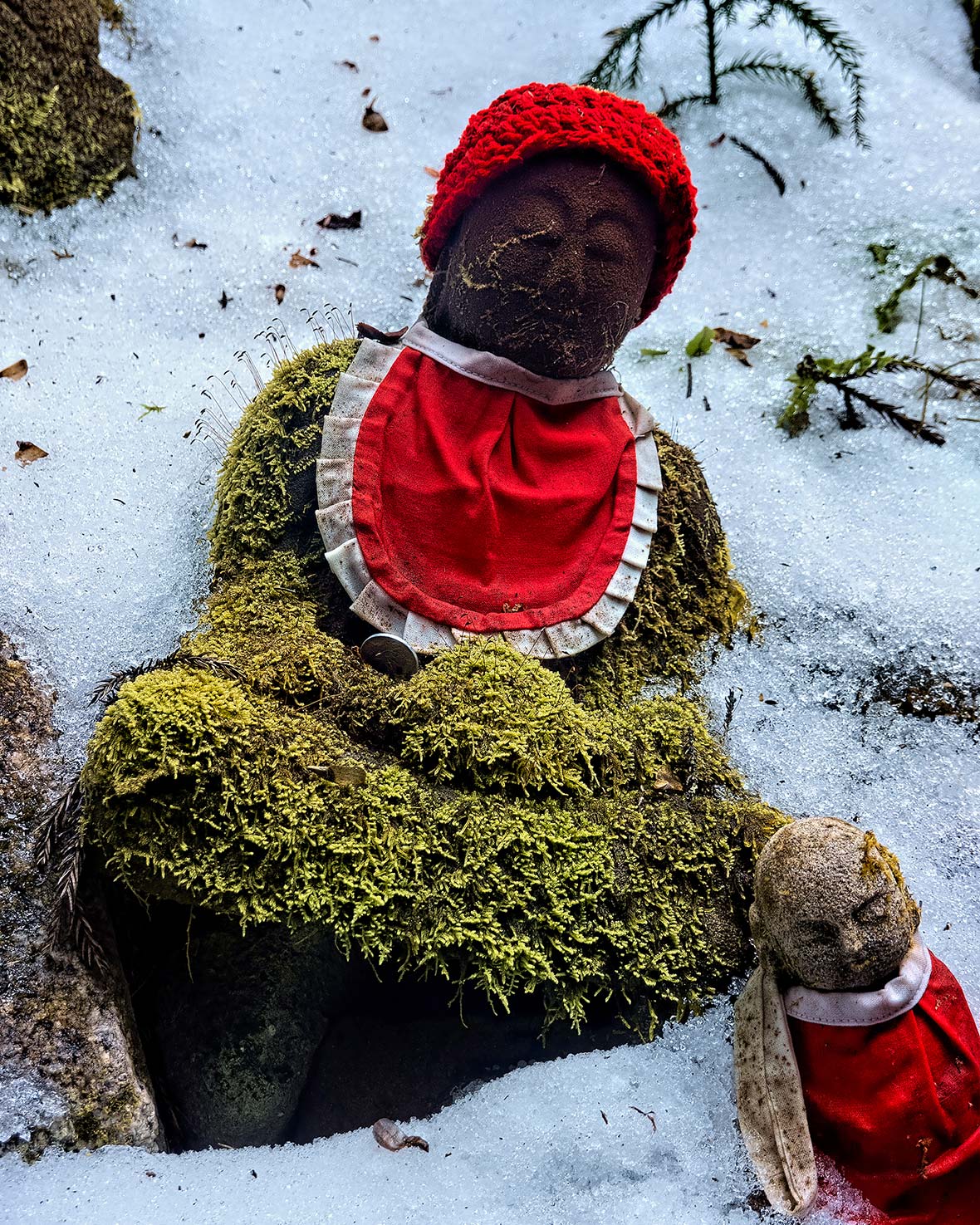
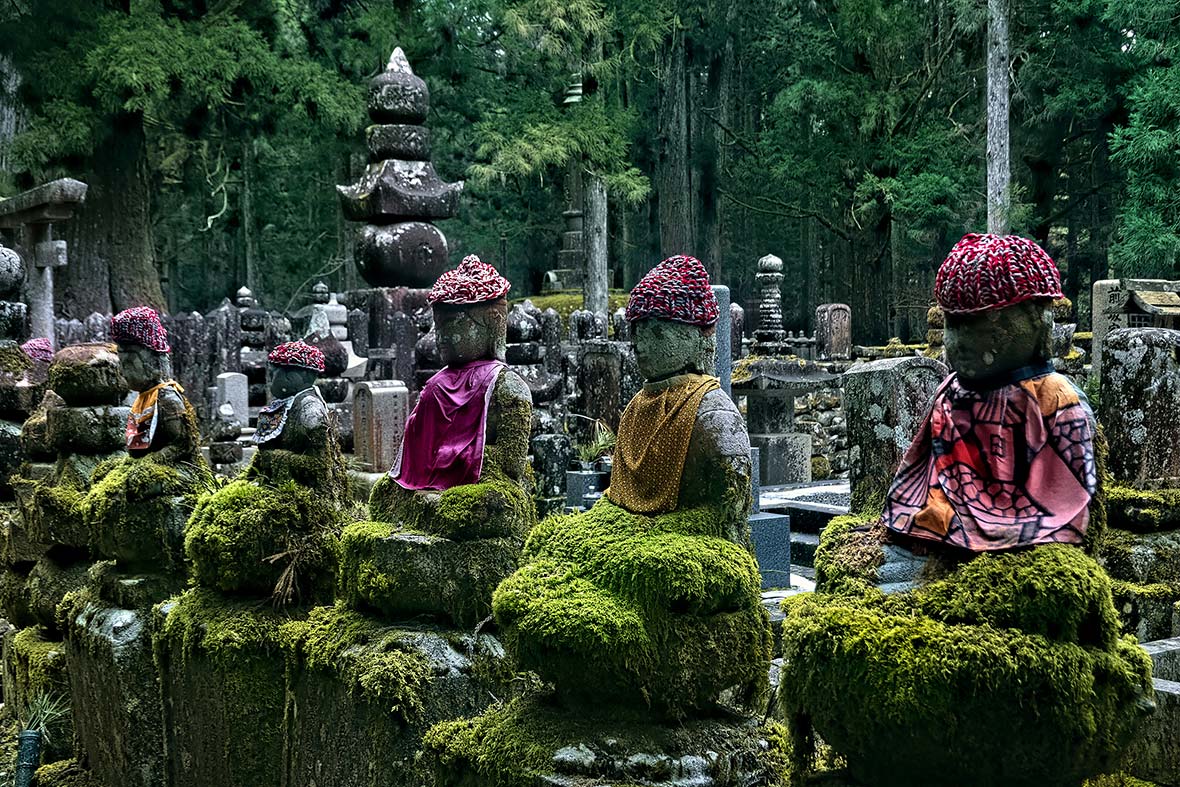
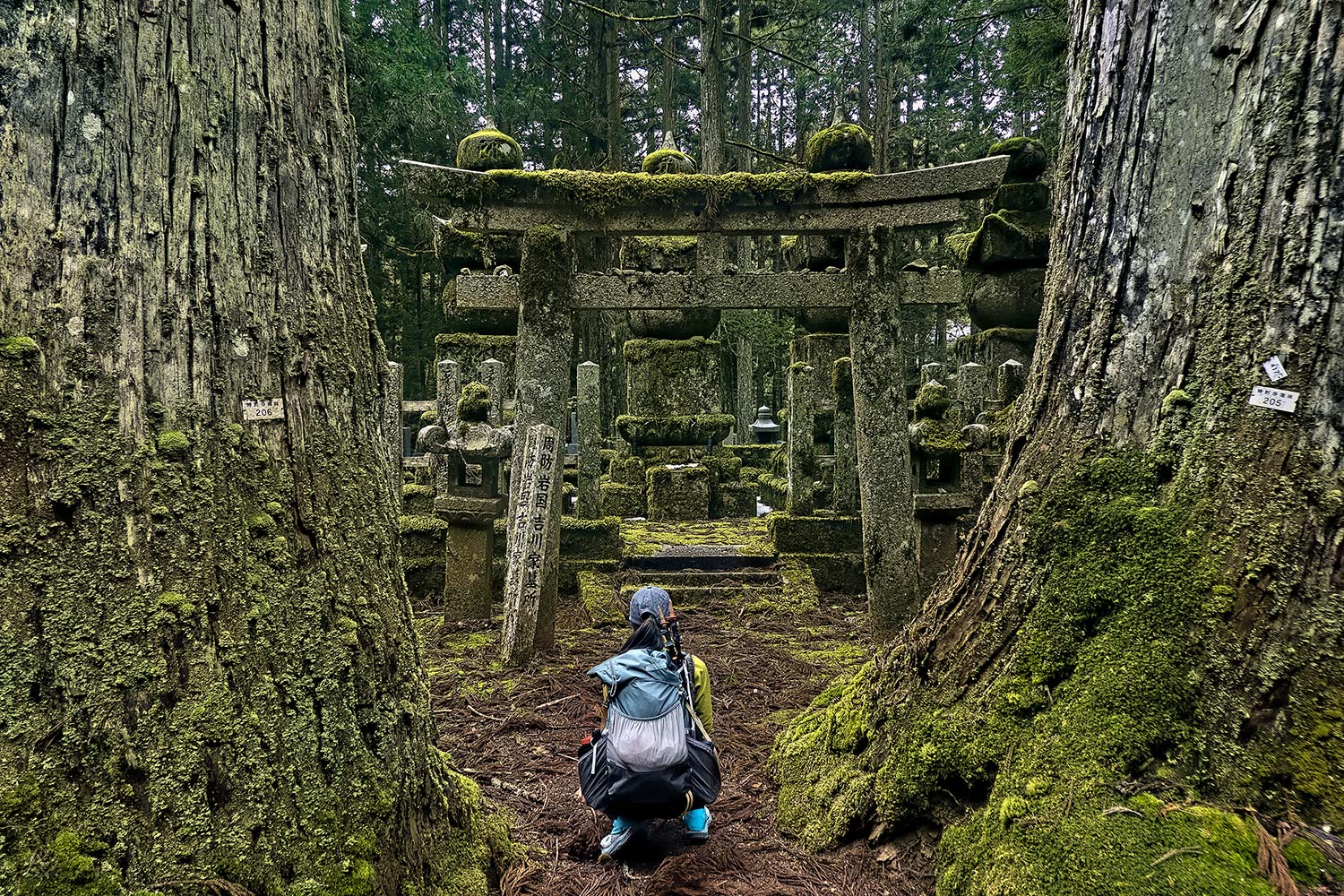
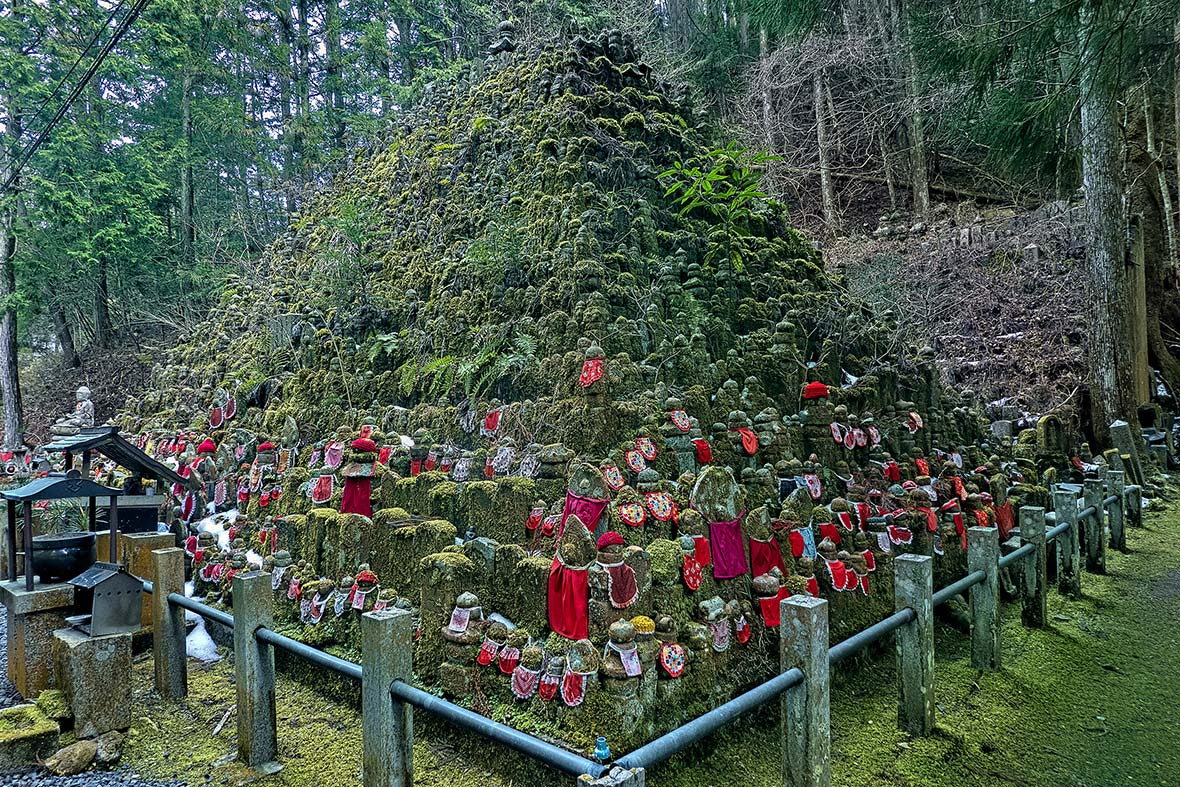
While the main 2-kilometer path into Okunoin and Kobo Daishi’s mausoleum is home to thousands of tombs and gravestones, with even giant corporations like Panasonic or Kirin Beer having company graves, the more hidden routes inside the forest are filled with thousands of jizo statues. Jizo are small stone statues that resemble children and are the guardian deities and protectors of both children and travelers. As red is believed to ward off evil in Japan, the jizo are often clothed in red knit hats or bibs. While we’d seen jizo throughout our time on the Kumano, at Koyasan they were everywhere, and covered in moss and forest growth as well, often placed next to ancient burial sites or gates in the forest, with the entire area often looking like something out of a Lord of the Rings type fantasy.
We could have stayed in the forest forever, it was just so magically silent and peaceful, and I understood why the Kumano Kodo remains an eternal pilgrimage. While the hardships of the old days may have been softened by comfortable lodging, hot springs, and good apps and trail signage to avoid getting lost, the journey was still the same, in a traditional Japan full of nature, and a chance to slow down and appreciate the trees, the views, companionship, and the enjoyment of walking, and to try to keep the modern-day spirit of the walking pilgrim alive.
